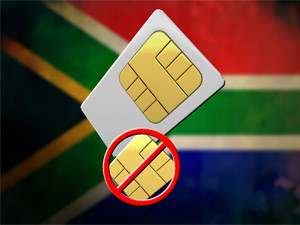
The release of Apple's new smartphone, the iPhone 5, may be delayed in SA, and fans of the technology will either have to wait, or use a SIM card supplied by a foreign network.
This is because the new thinner, lighter iPhone 5 requires SIM technology that is currently not available in this country - the latest smart card format, the nano-SIM - and SA's network operators are unable to say when they will source the chips.
Only recently designed and approved, the nano-SIM is currently not in use by any other device, and is 40% smaller than the current smallest SIM card design, at 12.3mm wide by 8.8mm high, and 0.67mm thick. It does the same job as SIM cards consumers are familiar with, but consists of only the gold chip, without a plastic surrounding.
World Wide Worx MD Arthur Goldstuck says - at least initially - the only local smartphone users who will be able to experience the iPhone 5 are those who are prepared to forego the use of our local networks, or "techies" that will find a way to successfully adapt a regular or micro-SIM to the nano-SIM's specs.
"Those who want bragging rights and bring an iPhone 5 into SA won't really care if they can't use it on cellphone networks here. Then there are the techies, who will probably practise on a number of starter packs until they can modify a micro-SIM into a nano-SIM."
Goldstuck says, while it is possible to cut a micro-SIM into a nano-SIM, it is "incredibly risky" and chances are high that attempts will yield an unusable SIM. "The problem is the nano-SIM is also flatter/thinner than a micro-SIM, so to adapt it you would have to sand it down a bit. There are people doing that, and offering advice online - but it is very tricky."
Release reckoning
Goldstuck says, relative to the release time-frame of the iPhone 5's predecessor, SA could probably expect an early-November release, but this could be delayed.
"The arrival of iPhone 5 in SA could be held back due to the nano-SIM issue, because the networks will have to produce or at least adapt them for their own use. And I suspect their production lines are not set up for adaption for nano-SIMS."
He says, however, we can be sure there will be a supply of nano-SIMs once the iPhone 5 is made available in the local market. "And, once there are SIM cards, there will also be supplies of these to the retail outlets, but chances are that will only be after the new iPhone is released in SA."
Early reviewers of the iPhone 5, says Goldstuck, have failed to acknowledge that the requirement for nano-SIMs is one of the main format issues that have frustrated users. "[These reviewers] have uniformly raved about the device, but have played down this issue and have pandered to readers, who probably don't want to hear anything negative about the iPhone 5."
New market?
Apple unveiled the iPhone 5 amid much hype last week and, as expected, announced the phone features a new 7.6mm body that is 20% lighter than the iPhone 4S.
The company says the new iPhone design made it necessary to "sacrifice" certain features. "If a component wasn't small enough, we re-imagined it. iPhone 5 is just 7.6mm thin. To make that happen, Apple engineers had to think small, component by component. They created a nano-SIM card, which is 44% smaller than a micro-SIM."
Goldstuck says it looks like this development has seen a new market emerging - in cutters and adapters. "There will probably be a new adapter for the nano-SIM, and you will have a normal and micro-SIM adapter, making it backwards-compatible. So you will be able to use the SIM in other devices, but the normal and micro-SIMs aren't forward-compatible for devices."
Restrained response
SA's mobile operators are either reluctant or unable to provide any details as to when the local market can expect the nano-SIMs to be available.
Vodacom says it has "no details at this stage", while MTN says it cannot comment on any iPhone-related queries. Cell C and 8ta both confirm they will launch nano-SIMs in due course, but neither can put a time or price frame to this.
"Timing and pricing will be confirmed once we have a clear indication of when SA will receive the iPhone," says Cell C.
SIM specs
The nano-SIM was standardised by the European Telecommunications Standards Institute (ETSI) about four months ago.
Announcing the new SIM card format, the ETSI said: "Today's SIM card designs take up a significant amount of space inside a mobile device. This space is more and more valuable in today's handsets which deliver an ever-increasing number of features."
The ETSI says the SIM, a fourth form factor (4FF) card, can be packaged and distributed in a way that is backwards-compatible with existing SIM card designs. "The new form format was adopted by industry with the involvement of major mobile network operators, smart card suppliers and mobile device manufacturers."
The ETSI says the 4FF design is freely available from the ETSI Web site.
Share